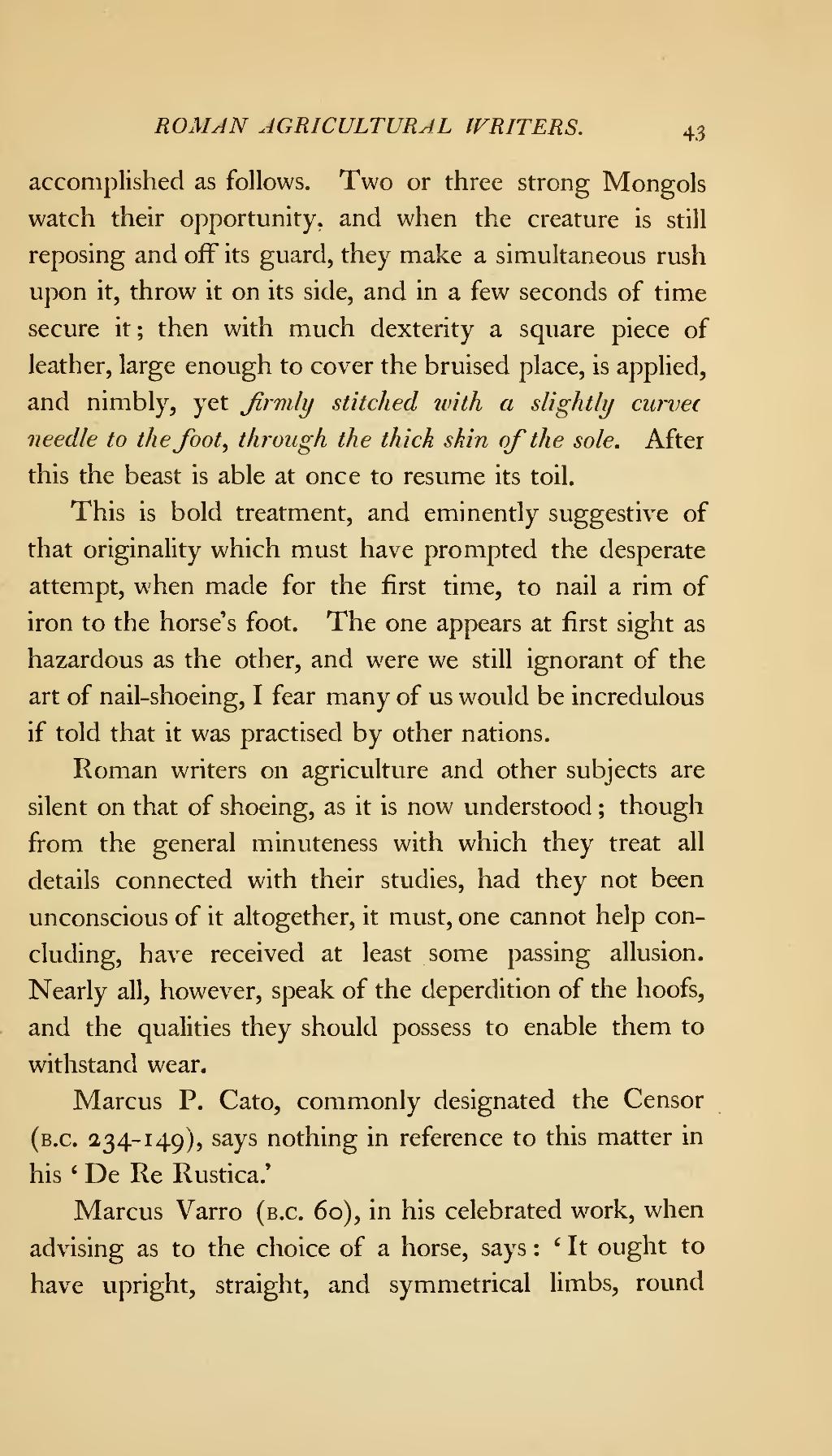accomplished as follows. Two or three strong Mongols watch their opportunity, and when the creature is still reposing and off its guard, they make a simultaneous rush upon it, throw it on its side, and in a few seconds of time secure it; then with much dexterity a square piece of leather, large enough to cover the bruised place, is applied, and nimbly, yet firmly stitched with a slightly curved needle to the foot, through the thick skin of the sole. After this the beast is able at once to resume its toil.
This is bold treatment, and eminently suggestive of that originality which must have prompted the desperate attempt, when made for the first time, to nail a rim of iron to the horse's foot. The one appears at first sight as hazardous as the other, and were we still ignorant of the art of nail-shoeing, I fear many of us would be incredulous if told that it was practised by other nations.
Roman writers on agriculture and other subjects are silent on that of shoeing, as it is now understood; though from the general minuteness with which they treat all details connected with their studies, had they not been unconscious of it altogether, it must, one cannot help concluding, have received at least some passing allusion. Nearly all, however, speak of the deperdition of the hoofs, and the qualities they should possess to enable them to withstand wear.
Marcus P. Cato, commonly designated the Censor (B.C. 234-149), says nothing in reference to this matter in his ‘De Re Rustica.’
Marcus Varro (B.C. 60), in his celebrated work, when advising as to the choice of a horse, says: ‘It ought to have upright, straight, and symmetrical limbs, round

